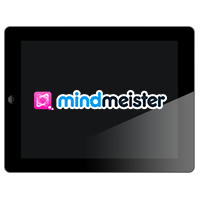What is Assistive Technology for writing support? Assistive Technology (AT) can be a big help to individuals who struggle with different types of writing challenges. There are AT tools that can make the physical act of writing easier. AT can also help individuals who have trouble with spelling and grammar, and with organizing and expressing their thoughts.
 When do I need to use AT for writing? AT for writing may be needed when the motor aspect of writing is difficult. Motor aspects of writing include: holding the writing utensil; stabilizing the paper; visually guiding the hand; moving the writing utensil along the paper; visual recall of the letter; kinesthetic memory of letter formation; and word formation and writing and re-writing as part of the editing process. Writing support may be needed for individuals who have difficulty organizing and expressing their thoughts which is known as composition.
When do I need to use AT for writing? AT for writing may be needed when the motor aspect of writing is difficult. Motor aspects of writing include: holding the writing utensil; stabilizing the paper; visually guiding the hand; moving the writing utensil along the paper; visual recall of the letter; kinesthetic memory of letter formation; and word formation and writing and re-writing as part of the editing process. Writing support may be needed for individuals who have difficulty organizing and expressing their thoughts which is known as composition.
Who needs AT to help with writing? Struggling writers may be young students who are beginning to learn to use writing utensils and struggle with the motor aspects of writing. Individuals of all ages may continue to have difficulty with writing. Or, individuals may not struggle with the mechanics of writing, but instead, have difficulty with organizing before and while drafting or composing essays, letters, papers, or work assignments.
Why? Assistive Technology for writing mechanics and composition can provide the support to bridge the gap to the skills an individual needs. A number of learning and attention issues can cause trouble with writing. Individuals Kids who struggle with writing may have difficulty with handwriting, expressing ideas in writing, or both. Dysgraphia is a common reason that individuals struggle with writing.
When kids struggle with writing, they may be experiencing difficulty in two areas. One is the mechanics of handwriting. The other is expressing ideas in writing. Dysgraphia is a learning issue that can affect either area—or both.
Resources for Writing (part of Learning, Cognition & Development)
AT3 Center Videos on Writing
EasterSeals Crossroads -
INDATAProject TechTip Videos
Easter Seals Crossroads has been providing assistive technology solutions in Indiana since 1979. In 2007, Easter Seals Crossroads partnered with the State of Indiana, Bureau of Rehabilitative Services to establish the Indiana Assistive Technology Act (INDATA) Project. The INDATA Project offers excellent videos and Podcasts that provide timely updates on new assistive technology.
Here's INDATA's YouTube video playlist for Tech Tips for Google (including two videos on Google Read & Write).
INDATA also offers three Podcasts that you can listen to, or subscribe to, on this page. At the top right of any of these pages you can search for a specific disability category.
The AT3Center.net wishes to thank the INDATA Project for their expertise and excellence in advancing access and awareness of assistive technology.
Information on this page addresses Assistive Technology for people with writing disabilities in...
EDUCATION | EMPLOYMENT | COMMUNITY LIVING
EDUCATION

Talking Points for Writing Assistive Technology in Education
Motor Aspects of Writing
Handwriting is a complex skill involving visual perceptual, neuromuscular, and motor components. There are also cognitive and social emotional factors that influence handwriting. These all make writing one of the most complex skills acquired by students. Students must produce written material in tests, worksheets, and essays to demonstrate what they have learned. Handwriting begins prior to kindergarten through second grade. Penmanship is practiced through fourth grade. Keyboarding starts at or before the fourth grade. Technology has made alternatives to handwriting available, including keyboarding and voice recognition.
Assistive Technology for the Composition of Written Material
Writing also involves a cognitive component of organizing and composing written material. A student is required to learn a series of concepts to organize into a linear form and then to compose the ideas in a meaningful way. A common concern expressed by teachers, parents, and in some cases, the students themselves is “They have good ideas but just can't get them down on paper.” The following tools may assist students in overcoming or adapting to the writing obstacles they face.
Credit: excerpts from Wisconsin AT Initiative project “Assistive Technology for Writing”
For children transitioning into the public school at age 3 - To ensure successful AT transitions for children turning 3 years old, it is important for any AT the child is currently using or may need to use in school, whether written into the child's Individualized Family Service Plan (IFSP) or not, be incorporated into the child's Individualized Education Program (IEP). You'll find this information in the Community section below.
For students transitioning into the community or employment settings upon high school graduation - To ensure successful AT transitions for students aging out of school services, it is important for any AT the student is currently using or may need to pursue employment outcomes, whether written into the child's Individualized Education Program (IEP) or not, be incorporated into the student's Individualized Plan for Employment (IPE). IPEs are developed through collaboration with the state vocational rehabilitation agency using a Vocational Rehabilitation (VR) Counselor. You'll find this information in the Employment section below.
Situations where a child might need assistive technology for writing:
School Environment
- K-12 classes
- Notetaking is difficult
- Hard to keep up pace with schoolwork
- Essays are more difficult to compose
- Post-Secondary Education
Socialization
- Write letters, cards, email
- Social media
- Frustration or anxiousness
Family / Home Environment
- Homework
- Writing papers and Essay questions
- Life skills, some weak fine motor skills
- Making lists
Community
- Employment
Commonly Asked Questions for a Student Who Has Writing Needs
Please listen to this section and/or download a transcript here: TXT format
Solutions for Students Who Need Writing Support
(click to open the accordions below)
| Helpful Links & PDF Resources |
|---|
| Dictionary.com - An online dictionary, thesaurus, reference and translation guide |
| Visuwords.com |
| Understood.org |
Talking Points for Assistive Technology Supports for Writing in Employment
The category of Employment encompasses those people of working-age who are currently employed or who are seeking employment. "Learning Disabilities" is an umbrella term describing a number of other, more specific learning disabilities, such as dyslexia and dysgraphia. People with learning disabilities are of average or above average intelligence. There often appears to be a gap between the individual’s potential and actual achievement. This is why learning disabilities are referred to as "hidden disabilities": the person looks perfectly “normal” and seems to be a very bright and intelligent person, yet may be unable to demonstrate the skill level expected from someone of a similar age.
A learning disability cannot be cured or fixed; it is a lifelong challenge. However, with appropriate support and intervention, people with learning disabilities can achieve success in school, at work, in relationships, and in the community.
An individual with a writing disability might have difficulty with the physical process of writing making handwriting illegible and causing difficulty when filling in blanks, bubble in dots, or writing on a line. Individuals may have difficulty spelling, reverse letters or omit words and letters. Another form of writing disability is the inability to organize thoughts and write or type in a coherent, organized manner.
Dysgraphia describes a wide range of writing challenges. Dysgraphia is often used to refer to handwriting issues such as letter or word formation and other technical aspects of writing.
“Disorder of written expression” describes individuals who struggle with the more conceptual aspects of writing. They may freeze up or have other difficulties that make it hard to organize their thoughts and express them effectively.
For students transitioning into the community or employment settings upon high school graduation - To ensure successful AT transitions for students aging out of school services, it is important for any AT the student is currently using to be incorporated into the student's Individualized Plan for Employment (IPE). IPEs are developed through collaboration with the state vocational rehabilitation agency using a Vocational Rehabilitation (VR) Counselor.
Situations where an individual might need assistive technology for Writing
Work Environment
- Interview process
- Meetings
- Trainings
- Daily tasks
Socialization
- Write letters, cards, emails
- Social media
- Frustration or anxiousness
Family / Home Environment
- Writing papers and essay questions
- Life skills, some weak fine motor skills
- Making lists
Community
- Bank
- Library
- Post office
Commonly Asked Questions for an Individual Who Has Writing Needs
Q - What types of learning disabilities are there?
A - Learning disabilities can be divided into three broad categories: developmental speech and language disorders, academic skills disorders, and other (such as coordination disorders).
Learning disabilities are disorders that affect the ability to understand or use spoken or written language, do mathematical calculations, coordinate movements, or direct attention. Learning disabilities are a lifelong condition; they are not outgrown or cured, though many people develop coping techniques through special education, tutoring, medication, therapy, personal development, or adaptation of learning skills.
Approximately 15 million children, adolescents, and adults have learning disabilities in the United States.
Q - I am a qualified person with a disability under the ADA and need AT to do my job. May I ask my employer to provide it?
A - Individuals with disabilities may ask for an accommodation at any time even for an interview.
Q - What types of AT can I ask for?
A - Assistive technology that is needed to do the essential functions of the job can be requested.
Solutions for Employees Who Need Writing Support
(click to open the accordions below)
| Video/Podcast Resources: |
|---|
| Free to Low-Cost Assistive Technology Solutions |
Talking Points for Assistive Technology for Writing in Community Living
The category of Community Living encompasses infants and toddlers who are under the age of 3 and not yet in school, those people who were born with or have acquired an injury and are otherwise participating in community activities (not as students or employees) as well as those who are aging in the home. The following talking points are applicable to individuals with disabilities as well as family members and others providing support and care to these individuals with disabilities.
Sometimes an individual will make it to adulthood and have the necessary assistive technology to participate in the community and at home. When that is the case, these pages will show other considerations regarding accessibility and accommodations. When the person requires additional tools to participate, the Human Activity Assistive Technology (HAAT) model will be used to show how an individual might best match up with a piece of AT to be used in the community and at home
For those children transitioning into the public school at age 3 - To ensure successful AT transitions for children turning 3 years old, it is important for any AT the child is currently using or may need to use in school, whether written into the child's Individual Family Service Plan (IFSP) or not, be incorporated into the child's Individualized Education Program (IEP).
Link to Education section
Situations where an individual might need assistive technology for Writing
Socialization
- Lunches
- Telecommunication
Community
- Doctor's office visits
- Work
- Shopping
- Various Appointments
- Transportation to, and from, events
- Restaurants
- Post office
- Volunteer activities
- Entertainment
- Sports
- Library
- Friends' houses
Family/Home Environment
- Paying bills
- Games
- Computer tasks/games
Commonly Asked Questions for a Person Who Has Writing Loss - Impairment - Needs
Q - What types of learning disabilities are there?
A - Learning disabilities (LD), sometimes referred to as “specific learning disorders,” are life-long, but adults who have LD can experience great success in all aspects of life when using their strengths together with the strategies, accommodations and technology that are most appropriate and effective for their individual needs.
Learning disabilities can be divided into three broad categories: developmental speech and language disorders, academic skills disorders, and other (such as coordination disorders). Learning disabilities are disorders that affect the ability to understand or use spoken or written language, do mathematical calculations, coordinate movements, or direct attention. Learning disabilities are a lifelong condition; they are not outgrown or cured, though many people develop coping techniques through special education, tutoring, medication, therapy, personal development, or adaptation of learning skills. Approximately 15 million children, adolescents, and adults have learning disabilities in the United States.
Q - What is Assistive Technology?
A - AT is anything that helps a person do a task easier, better, or more efficiently, that otherwise would be difficult or impossible to do.
Solutions for Individuals with Writing Loss - Impairment - Needs
(click to open the accordions below)

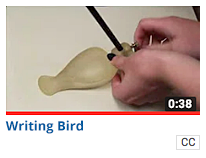


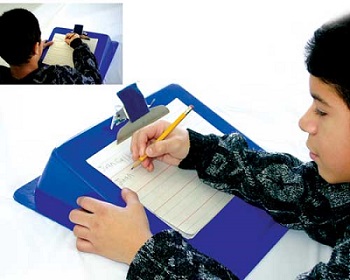
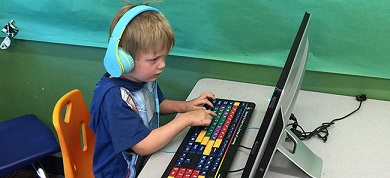 A fifth grade elementary student was having difficulty composing ideas on paper for assignments. Students were learning how to write essays with five paragraphs.
A fifth grade elementary student was having difficulty composing ideas on paper for assignments. Students were learning how to write essays with five paragraphs.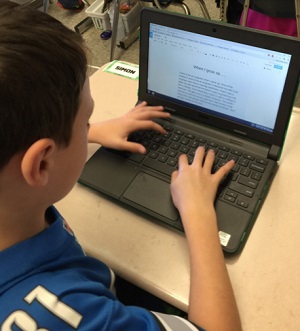 s correct. The student will also trial a Chromebook (lightweight, portable, affordable) to type instead of write. Chrome extensions such as a graphic organizer will help the student brainstorm the topic and build a graphic organizer of her thoughts.
s correct. The student will also trial a Chromebook (lightweight, portable, affordable) to type instead of write. Chrome extensions such as a graphic organizer will help the student brainstorm the topic and build a graphic organizer of her thoughts.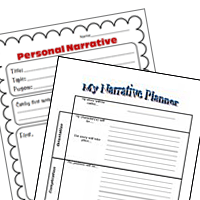

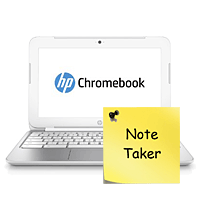
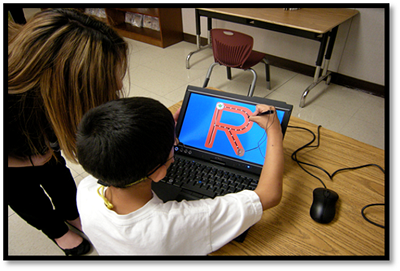 A 9th grade student with Muscular Dystrophy had limited strength which had grown more pronounced.
A 9th grade student with Muscular Dystrophy had limited strength which had grown more pronounced.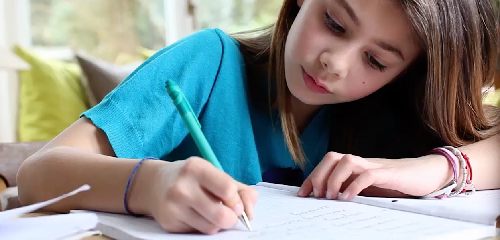







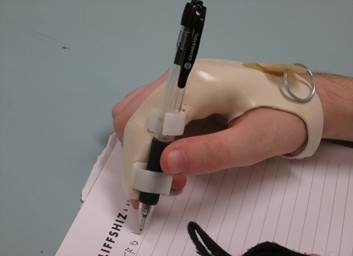


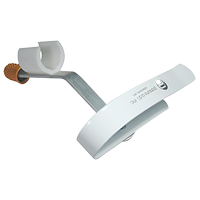
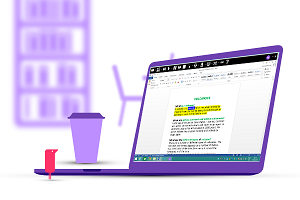

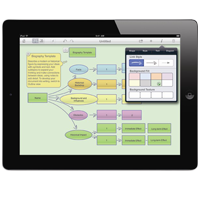

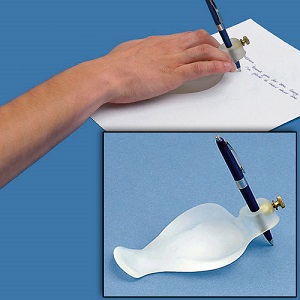
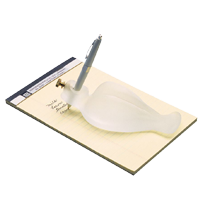




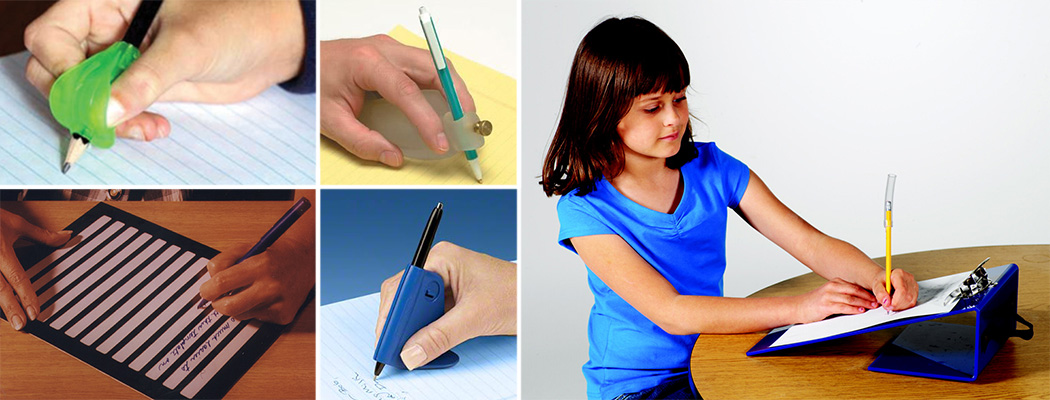

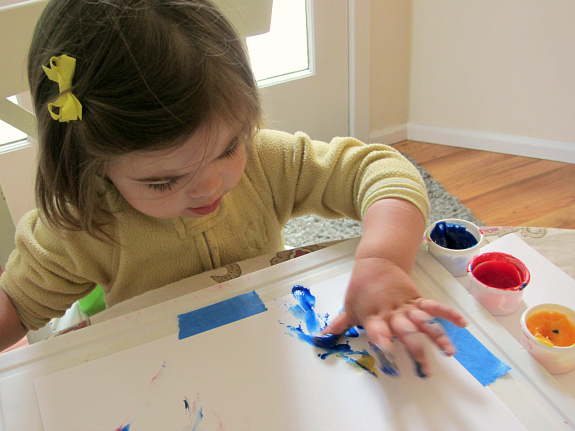 The pediatrician said that by starting early with pre-reading and pre-writing activities, he would gain a lot of ground before the age of 4 when he could start pre-kindergarten. Sara read about the importance of pre-writing activities that may not seem like writing skills, but they are actually necessary to becoming a writer. Encourage random scribbling and access to art supplies. Provide writing prompts with pens, pencils, chunky crayons, art supplies, paint, and utensils to write letters (Easy-to-grip crayons and thick pencils can help toddlers with weak grips). Cut paper bags up to draw on. Tape down paper on a table or slant board so it does not move as they draw. Try using Q-tips dipped in washable paints to let the child scribble.
The pediatrician said that by starting early with pre-reading and pre-writing activities, he would gain a lot of ground before the age of 4 when he could start pre-kindergarten. Sara read about the importance of pre-writing activities that may not seem like writing skills, but they are actually necessary to becoming a writer. Encourage random scribbling and access to art supplies. Provide writing prompts with pens, pencils, chunky crayons, art supplies, paint, and utensils to write letters (Easy-to-grip crayons and thick pencils can help toddlers with weak grips). Cut paper bags up to draw on. Tape down paper on a table or slant board so it does not move as they draw. Try using Q-tips dipped in washable paints to let the child scribble.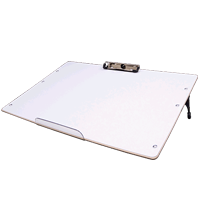
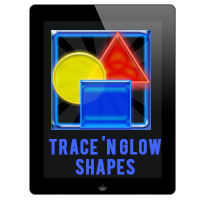
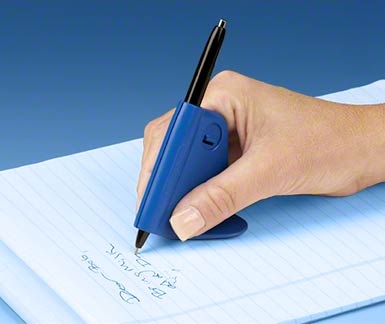
 help with writing assignments, but he would remember his writing struggles. Then he realized that he could compose thoughts very well by using his voice on his smartphone to type notes, reminders, and text messages. Typing with his voice made his life simpler. He searched online for computer programs that would do the same thing and discovered many options. He began using the Chrome browser and added a speech recognition free extension called Dictanote. He would talk into a microphone headset and write paragraphs with his thoughts and voice. He could easily show his children how to write a main point and supporting ideas in each paragraph by just talking into a document. He also discovered electronic graphic organizers, like Mindmeister and
help with writing assignments, but he would remember his writing struggles. Then he realized that he could compose thoughts very well by using his voice on his smartphone to type notes, reminders, and text messages. Typing with his voice made his life simpler. He searched online for computer programs that would do the same thing and discovered many options. He began using the Chrome browser and added a speech recognition free extension called Dictanote. He would talk into a microphone headset and write paragraphs with his thoughts and voice. He could easily show his children how to write a main point and supporting ideas in each paragraph by just talking into a document. He also discovered electronic graphic organizers, like Mindmeister and 